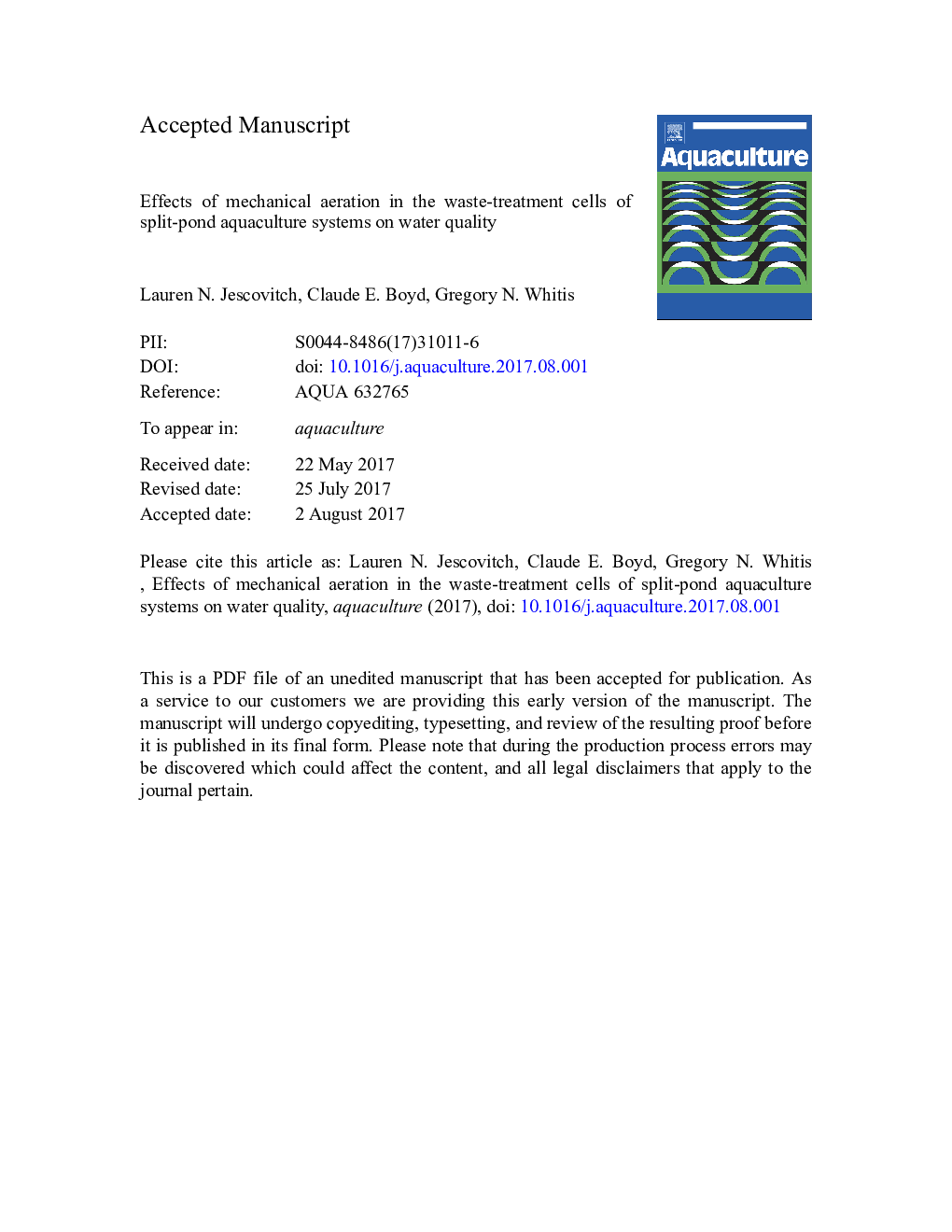| Article ID | Journal | Published Year | Pages | File Type |
|---|---|---|---|---|
| 5539156 | Aquaculture | 2017 | 42 Pages |
Abstract
Split-pond systems divide a traditional pond into a 1:4 relationship where 20% of the water surface area is designated to fish production and 80% is designated to waste-treatment. Water passes from the fish cell to the waste cell for water quality improvement and flows back to the fish cell. The present study was conducted on a commercial catfish farm in west Alabama that has eight split-ponds, each with a fish-holding section of about 8000Â m2. Two, 10-hp floating, electric paddlewheel aerators were placed in the waste cells of each of four ponds - treatment ponds; while four ponds - the controls - had un-aerated waste cells. Analyses were made for pH, dissolved oxygen (DO), temperature, Secchi disk visibility, chlorophyll a, total ammonia nitrogen (TAN; nitrogen in NH3Â +Â NH4+), ammoniaânitrogen (NH3-N), nitriteânitrogen, nitrateânitrogen, total nitrogen, total phosphorus, soluble reactive phosphorus, chemical oxygen demand (total and soluble), biological oxygen demand, and acidification potential. In Year 1 (2014) ammoniaânitrogen was greater in treatment ponds than control ponds. In Year 2 (2015), greater concentrations for control than treatment ponds were found for TAN, ammoniaânitrogen, total nitrogen, chemical oxygen demand (soluble and total). In Year 3 (2016), greater concentrations were found for control ponds than treatment ponds for TAN, ammoniaânitrogen, total phosphorus, and soluble chemical oxygen demand. Nevertheless, no differences were found between treatments and control ponds for production, yield, and feed conversion ratio (FCR). Best management practices that could help the farmer minimize fish mortality and improve production from previous research are discussed.
Keywords
Related Topics
Life Sciences
Agricultural and Biological Sciences
Aquatic Science
Authors
Lauren N. Jescovitch, Claude E. Boyd, Gregory N. Whitis,
